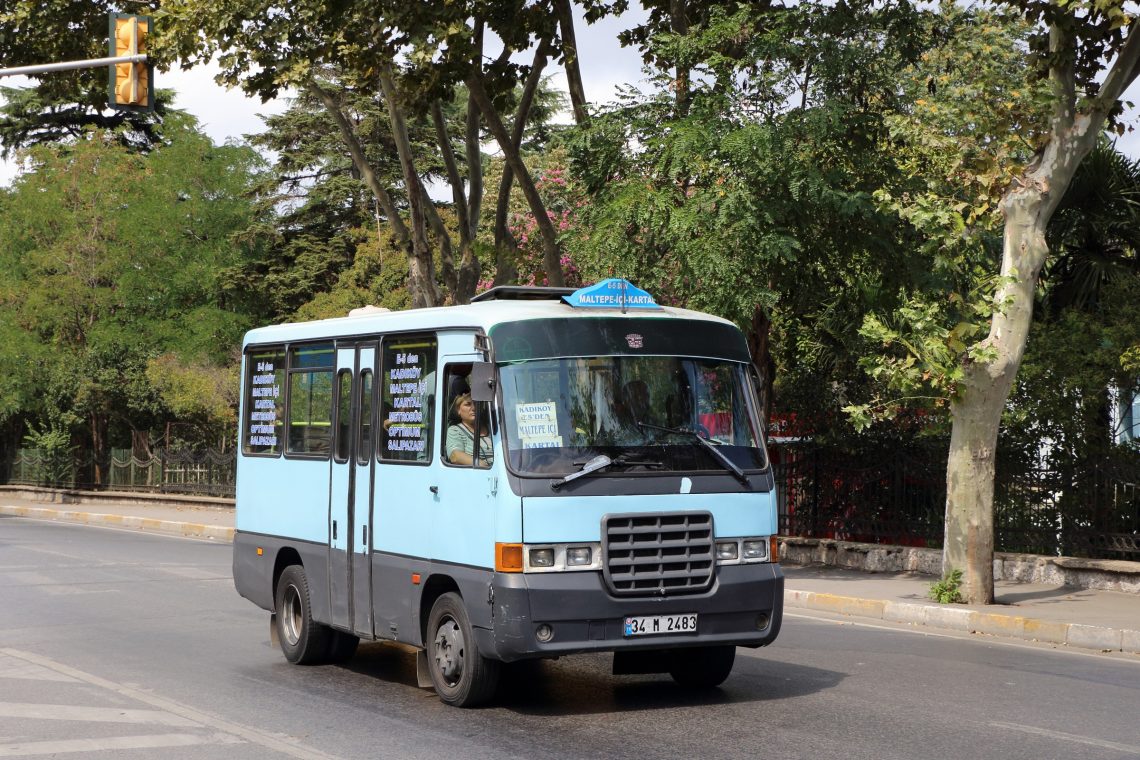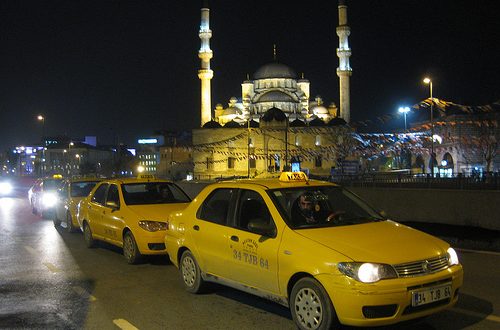
Dolmus in Turkey
Dolmus in Turkey : 7 tips for traveling with the Turkish collective bus
Dolmus is the name for a Turkish minibus that works similar to a shared taxi.
The minibus drives along set routes and travel times. Along the route, the dolmus usually stops at any location to allow passengers to get on or off.
In small Turkish cities, it is the most important local transport.
Here I briefly explain the special features of a first time trip with the Dolmus and what to watch out for!
7 tips for your first dolmus in Turkey ride
1. Stops
Specially designated stops for a dolmus are rare along the routes in Turkey. There are parking spaces specially reserved for the Dolmus at the terminal stops, bus stations or important locations.
That is why it is often difficult to find a suitable bus in advance without knowing the local bus routes. Buses in the tourist resorts usually have the direction of travel or the final destination written on the bus. In smaller villages there is very little information on the bus routes.
It is best to ask hotel staff or locals which bus you have to or can take. In the seaside resorts on the south coast, this is easy and without any major problems.
2. Get in
Good. You have found the route were the Dolmus drives, you know a parking lot from which you are starting.
If the bus is in the parking lot, just get on.
If the bus comes towards you along the road, wave it early enough for it to stop. Please stand in a place where the bus driver can stop without any problems.
3. Pay your fare
In the dolmus you always pay in cash with Turkish lira.
A single trip within a city costs two to four Turkish lira, depending on the region. The buses also go back and forth between larger cities. The two-hour trip from Izmir to Bergama with the Dolmus for example will costs 15 Turkish Lira.
Numbers: At the seaside resorts, the drivers sometimes accept euros, but they will give you a lower exchange rate. You can not pay for the dolmus with rechargeable cards for public transport, such as the Istanbulkart. Instead, you go to the driver, give him the money and tell him your destiny.
Unfortunately, only a few dolmus drivers speak English good. Just say the name of your desired stop, for example “Manavgat Bazaar”, two three times, then he will understand you.
This is important for you, because nobody announces the stops in the dolmus and they are not written. I’ll get out of the car in a moment.
4. Please sit in the back during the first journey
Please sit as far back as possible the first time you ride a dolmus.
The reason for this is that Turks do not go to the driver when boarding, but give the money to other passengers to pass through.
They tell you in Turkish at which stop they want to get off and give you the money. Your job is to pass the money on to the driver or, if someone is in between, to pass on the information.
Sometimes the information and the money pass through ten hands on the way from the back seat. “Silent mail with money in Turkish”.
If you want to do this the first time, grab a seat at the front.
5. İnecek var! Get off please!
You can get off anywhere along the route.
Fixed stops are only marked for the dolmus at very few places. In addition, if you don’t have a prominent destination, it will be difficult to find the right place to get off.
That’s why I repeat myself once again: When you get in, please tell the driver where you want to get off, just repeat the stop two or three times. The dolmus drivers understand you without a single word of Turkish or English.
Alternatively, ask other passengers in the dolmus to tell you the correct stop.
Notice! “İnecek var!” Means something like “Get off please”. Say the two words if you want to get off along the route.
There used to be a co-drivers who helped the driver with the checkouts and the stops.This used to be popular in Turkey. As only an average of ten passengers travel this route there is no need for a extra driver anymore.
6. Dolmus etiquette
Apart from paying, getting on and off the bus, traveling in a dolmus is not much different from taking a bus in Germany.
Make room: Some of them take your free space for old people, people with disabilities or passengers with small children on their arms.
Wheelchairs and strollers: Dolmus buses usually have small ramps that fold out to make it easier for wheelchair users and passengers with strollers to get on.
Women: sometimes don’t want to sit next to men. A quick eye contact tells you without a word of Turkish whether the free space is really free.
Suitcases are not a problem: in rural areas, Turks transport everything with the dolmus, literally everything! I’ve seen goats, chickens, and IKEA shelves.
7. A little history
The term “dolmus” first appeared in Istanbul in the 19th century. This meant boats for crossing the Bosphorus Strait.
The dolmus has been available as a minibus or automobile since 1931. As with the boats, they were amongst the first in Istanbul.
There used to be a number of rules governing the fare and driver selection. For example, the price was divided amongst all passengers in the bus. The drivers had to be married, over 25 and not have a bad reputation.
Today’s Dolmus minibuses fit around 10 to 20 passengers. Many buses are set up individually, as the drivers are always traveling on the same bus. I saw a bus in Side with the driver laying black light tubes inside.
In the big cities, the small buses are disappearing more and more from the streets. For example, it has exchanged the city of Antalya for larger buses to reduce traffic in the city center.
Go with a dolmus in Turkey !
A trip in a dolmus is part of a trip to Turkey!
Just look at interesting places near your hotel and find the best possible dolmus route to get you there.
If you have any questions about traveling with a dolmus, write to me in the comments below!
I look forward to hearing from there!



